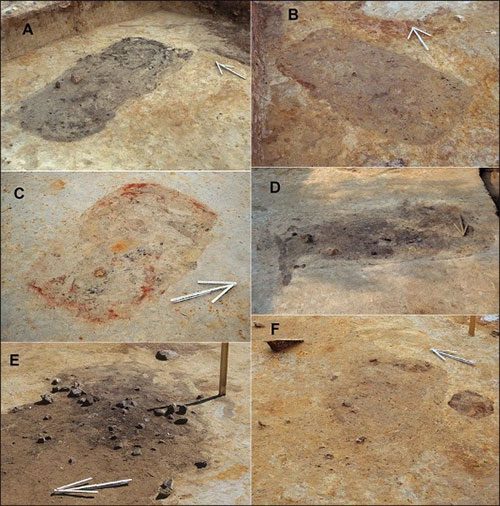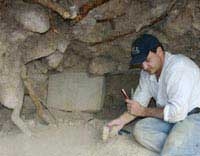The structure of the graves, the remnants of burial practices… have remained intact for 6,500 years; the only thing that has vanished without a trace is the human remains.
According to Science Alert, a new analysis has shed light on the mystery of the ancient cemetery located in the Arctic Circle area of Tainiaro, Finland, where the graves have shocked researchers since the first excavation in 1980.
Thousands of artifacts have been discovered and documented, yet there are no traces of any human beings!
All that remains in the burial pits is sand stained with a bit of ash, along with red ochre markings and some grave goods.

Graves without human remains in Finland – (Photo: ANTIQUITY).
The research team, led by archaeologist Aki Hakonen from the University of Oulu (Finland), believes that the 200 pits in the cemetery hold the secret to the missing skeletons.
“Although no bone material remains at Tainiaro, we believe it should still be considered a cemetery” – the authors wrote in a publication in the scientific journal Antiquity.
They argue that the acidic soil in the area caused the human remains to decompose more quickly than usual, completely disappearing after a few thousand years of burial.
In contrast, stone artifacts, ceramic shards, and animal bones that have been burned to ash still leave traces.
Despite the disappearance of human remains, the ancient cemetery and its empty graves remain an incredibly valuable archaeological find.
Most of the pits contain traces of ash and charcoal. Additionally, there is the presence of red ochre. This serves as evidence of ancient rituals.
Moreover, a vast cemetery is proof of the once-thriving Stone Age communities that inhabited this area.
The shape and size of the burial pits—approximately 1.5×2 meters, half a meter deep, with rounded corners—are similar to hundreds of other stone graves found in 14 cemeteries across Northern Europe.
Out of the 200 pits in the cemetery, 44 have been identified as actual burial sites.
Dr. Hakonen noted that only 1/5 of the cemetery has been excavated. They will continue their work using ground-penetrating radar and direct excavation in hopes of finding remaining hair samples and DNA.
Additionally, the question of why Stone Age people concentrated in this remote, frigid, and nearly inhospitable area is still an intriguing mystery waiting to be solved.





















































